Archives: Rug Styles
KURDISH RUGS
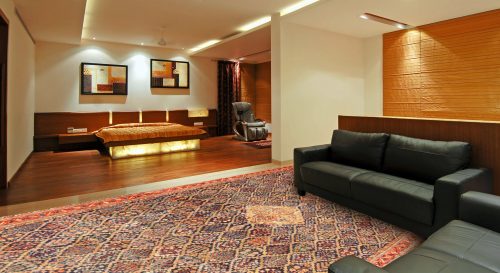
VARIED AND EVER-CREATIVE KURDISH RUGS The Kurds are the most prolific of rug weavers. In towns, villages and as migratory tribes, weavers turn out a bewildering variety of scatter rugs, runners and room sized rugs from ultra-fine Senneh’s to geometric semi-Caucasian rustic creations. They have in common excellent locally sourced wool, good dyes and solid construction. The Kurds are everywhere: western Iran, eastern Turkey, Iraq, the Caucasus. They are a rug universe unto themselves.
KERMAN – KIRMAN RUGS
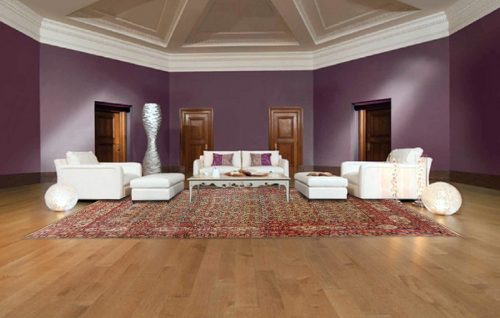
THE MOST IMAGINATIVE KERMAN RUGS Kerman rugs, the most imaginative of all antique Persian urban rugs. Kerman city is the seat of Kerman province in SE Persia and is situated about 2000 feet in elevation. Weaving has been carried out continuously since about 1600 with a semi-hiatus in the later 18th century. The 19th century revival was strong and the antique Persian rugs from there enjoy a considerable reputation. LAVAR RUGS Ravar, among other surrounding towns, was known for particularly fine examples of rugs, usually in complex allover patterns: the “Lavar” type. Kerman carpets are known for their wide
KILIM RUGS
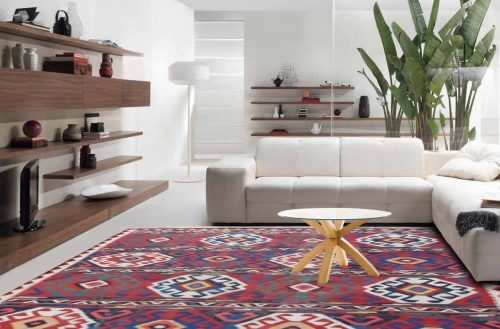
VERSATILE KILIM RUGS FROM EVERYWHERE Kilim refers both to a technique of pile-less flat-weave rugs in which the design is produced by wefts alone, without knots and to the resulting creation. The wefts may be continuous across the rug or not. Kilim rugs are made almost everywhere in the rug weaving areas and range from the finest urban Senneh Kilim rugs to colorful, dramatic pieces from Turkey, the Caucasus and all over Persia. Antique Aubusson carpets are also Kilims and so are the abstract, geometric rugs of the Navajos. Many antique Kilim rugs were woven for domestic use rather than
KHOTAN – SAMARKAND RUGS
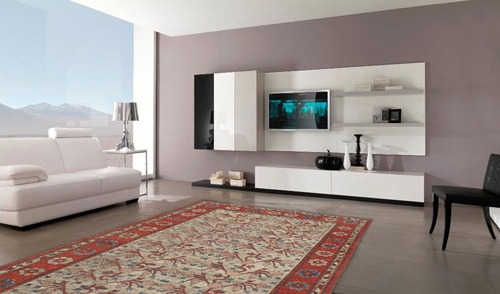
INDIVIDUALISTIC KHOTAN – SAMARKAND RUGS Samarkand, now in Uzbekistan, was a gathering point for rugs woven in western China, among them those from the Silk Road city of Khotan. Kashgar and Yarkand were other prominent rug weaving centers in Xinjiang province. RUG DESIGNS & COLORS The pomegranate tree stemming from a vase, an ancient oriental fertility symbol, is a common design on Khotan carpets. Many Khotans are in the 7’ by 13’ size, determined by local use. The color schemes are unique, employing, red, orange and yellow, but subdued and eminently decorative. Although there are no silk Khotans, silk and
KHORASSAN RUGS
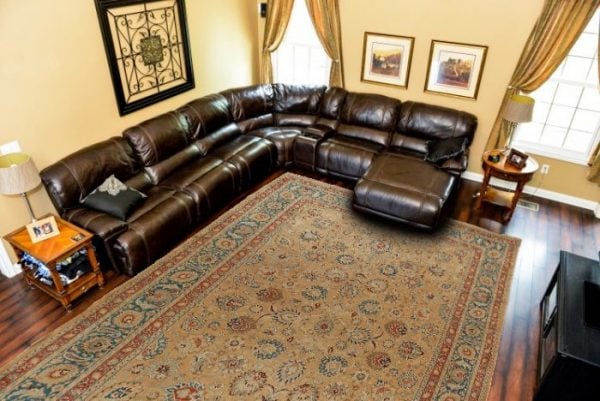
GLOWING COLORS OF KHORASSAN RUGS Khorassan, the “Province of the Sun” in northeast Persia, has woven interesting rugs since the late 16th century. In the later 19th century high quality room size carpets began to be produced, especially in the Shrine city of Meshed. Emogli and Saber were among the master weavers working there in the 20th century creating carpets the equals of any produced anywhere. KHORASSAN DESIGNS The short piles are particularly velvety, the numerous glowing colors are rich and saturated, and the curvilinear designs visually complex and layered. The textures are more like fine fabrics than floor carpets.
KASHAN RUGS
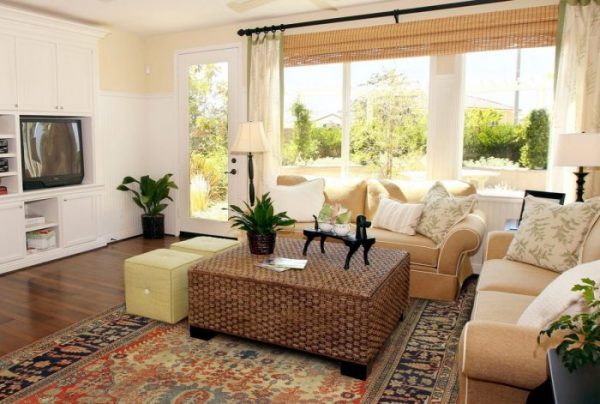
SOPHISTICATED FINE ANTIQUE PERSIAN KASHAN RUGS Situated on the caravan route to India in central Persia is the town of Kashan famed as one of the top-quality rug production areas. They have been producing and exporting carpets of the highest artistic craftsmanship over several centuries. The central Persian town of Kashan has had two rug lives. Some of the best classical 16th century Persian carpets such as the magnificent Ardebil Carpet in the Victoria and Albert Museum are attributed to Kashan. Most modern Kashan rugs are in the medallion and corners layout with red fields and blue borders. They
KARAJA RUGS
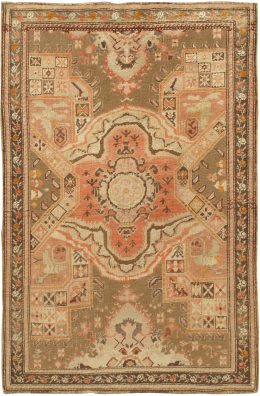
ANTIQUE VINTAGE KARAJA RUGS & RUNNERS Antique Karaja (Black Mountain) rugs were woven near the Caucasian border and partake of Caucasian styles and motives. The later production is the Karaja, retaining the patterns, but in a coarser weave, in scatters, rugs & runners and the occasional room size. A rich navy blue ground from indigo is a salient characteristic. Various styles of semi-geometric medallions appear on runners. Ivory and an exceptional blue-green are also strikingly evident in the precise detailing.
JOSHAGAN RUGS
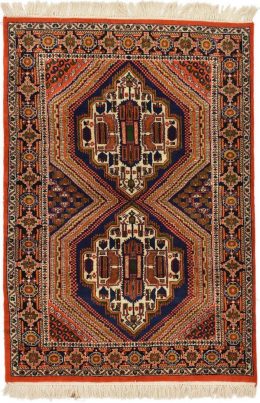
IDIOSYNCRATIC ANTIQUE & VINTAGE JOSHAGAN RUGS About 80 miles from Isphahan in central Persia, this town has woven rugs intermittently since the 18th century, mostly in lattice and flower patterns. Weaves are medium fine and the style is semi-urban. Antique Persian Joshagan rugs are relatively rare and there never was a significant export production. They are a true Persian carpet, unaffected by external style trends or the vagaries of taste. Reds and blues are the preferred colors.
ISFAHAN RUGS
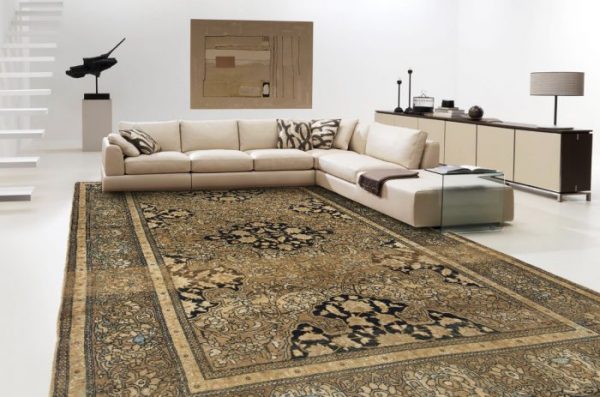
ELEGANT AND BEAUTIFUL ISFAHAN PERSIAN RUGS There are two types of Isfahan’s: the antique silk and metal thread “Polonaise” rugs woven on looms established by Shah Abbas (r. 1587-1629), and the finely woven 20th century revival pieces created by Serafian and other master weavers after about 1920. This town today, once the Persian capital and located in central Iran, has a population of over 400,000, and its ultra-fine rugs, often in complex medallion designs, are popular with the wealthy worldwide. The short pile has a velvet feel and the designs are dizzyingly elaborated in the field with equally detailed borders.
Heriz Serapi Rugs
ANTIQUE PERSIAN HERIZ SERAPI RUGS The Heriz district in NW Persia is justly famous for its robust, resilient semi-geometric rugs with charming designs and crisp natural dyes. Medallion carpets constitute the majority of the production. Serapi rugs are a particularly high quality grade of Heriz and there is no village of that name. Although the name derives from Serab-i, from Serab, they do not share any characteristics with Serab rugs. Heriz carpets are the most popular of all antique Persian carpets and have never gone out of style. Serapi carpets are all antique and were woven between 1890 and 1910.







